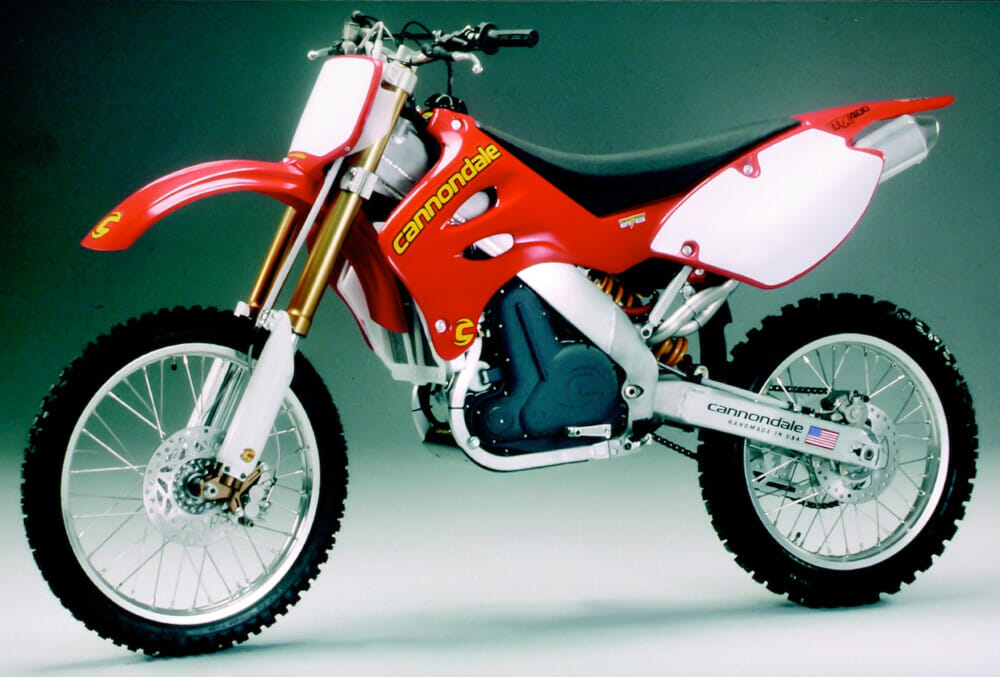| September 22, 2021
Cycle News Editorial
COLUMN
Welcome To MX, Triumph
By Ray Conway
So, Triumph is going to enter the dirt bike segment. The company’s recent press release stated it would someday make a full range of MX and enduro motorcycles. That is a big leap! When mighty Honda finally entered the dirt bike business in late 1972, even it started with just one model, the CR250M Elsinore.
(Read the press release Triumph Motorcycles to Enter Motocross and Enduro Segments here)
After Triumph’s announcement, the motorcycle social media sites were buzzing with all kinds of opinions: who would make them, where would they be made, or even if Triumph would actually really deliver any motorcycles at all.
I immediately looked at this announcement from a different angle. Just what exactly would they decide to build and where would these motorcycles be built, or by whom are just finance decisions.
Regarding enduro motorcycles there are more categories and racing opportunities than MX bikes, you have four-strokes, two-strokes and a wide range of engine displacements. For MX racing motorcycles, the rules start to push design options into certain boxes—450cc, 250cc four-stroke with some room for two-strokes.
Just a quick look at the history of MX bike shows some interesting development cycles. I say all MX bikes were new from year to year from 1965–1975. Jeff Smith was the last World MX Champion, in 1964, on a four-stroke motorcycle, a BSA, and after that it was all two-strokes. And all the manufacturers at that time were trying to find their way—one or two cylinders, one or two exhaust pipes, up pipe, down pipe, reed-valve, solid-state ignition, CDI, two shocks, one shock, etc. After 1975, all the manufacturers started to head to the same place, via long-travel suspension, up pipes, plastic fuel tanks, pointless ignitions and so on. Things continued pretty much en masse into the next phases: single-shock rear suspension, water cooling, disc brakes, and inverted forks. Today, we have circled back to four-stroke engines, but have added fuel injection.
Right now, we have nine manufacturers of 450cc MX motorcycles: Honda, Yamaha, Kawasaki, Suzuki, KTM, Husqvarna, GasGas, Beta, and TM. What is today’s state of the art? It’s pretty much 450cc overhead valve four-stroke engines, link-type single-shock rear suspensions, inverted forks and twin frame-mounted radiators. And eight of the available bikes have electric starting.
So, where are the differences? The Japanese brands feature aluminum frames and coil-spring forks. Kawasaki has pretty much the traditional layout of components. Honda is trying to package all the parts in a better way. Yamaha, of course, has the reversed cylinder head, and Suzuki is not throwing a lot of R&D at their MX bikes currently. If they are, they are being quiet about it.
The Austrians are steel frames and air forks. KTM is the standard bearer at any given model cycle, while Husqvarna is marketed as an upscale model with more standard equipment, and GasGas is the base model with all the basic items at an attractive price point.
The other two, Beta and TM, come in with Beta offering a steel frame with spring forks, and TM offering a European brand with an aluminum frame.
Where does all this leave Triumph? Does the MX market need, or can it support a 10th brand? And what path does Triumph choose? Aluminum frame, steel frame, air forks, spring forks? If Triumph stays with state of the art, it must build a bike better than the top choices right now to get customers to move to them, and if they can do that, the Japanese and the Austrians will certainly fight back to any inroads Triumph may make.
There is, however, a third path, one that is littered with famous names that designed completely new MX motorcycles. However, history does not support this path to success. Since you can add parts to an MX bike or delete parts from an enduro bike to make MX and enduro motorcycles, I will mix these names together.
From the early days you have the Yankee 500 twin, the Rokon 340MX, Harley MX 250, Cooper/Islo, and I feel you can throw in the Husqvarna automatics. In more recent times there have been VOR, Alta, Cannondale, ATK and, although it never broke cover, the Buell Phoenix, which fits my point here. Many of these names came to market and had racing success, also most of these names were in business for more than a few years, but in the end the rapid pace of off-road/MX motorcycle development requires a huge commitment in time, manpower and money.
 Will Triumph’s first dirt bike be as radical as the Cannondale was in its day?
Will Triumph’s first dirt bike be as radical as the Cannondale was in its day?
As a person who has been riding dirt bikes since before the Elsinore and been in the motorcycle industry for 45 years, I am excited to see this all play out. It should be quite entertaining.
Ray Conway began riding off-road motorcycles at the age of 10 in the Southern California desert. He then started working at local motorcycle dealerships from 1976-1986. In 1986, he went to work for American Honda for the next 28 years, retiring in 2015. Conway continues his work in the motorcycle industry doing special projects and consulting with many of today’s industry leading companies. -Editor.